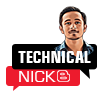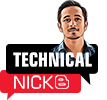The previous two years have seen a steep surge in electronic prescriptions and the reason behind the surge is the Covid-19 pandemic which is still there. Every industry has gone through a change due to the ongoing pandemic but the healthcare industry is the one that has gone through a drastic change. The healthcare industry has evolved in ways to continue to deliver unmatched quality of service to the people.
Personal visits to the clinics have been replaced by digital visits. Telemedicine has made it possible where patients can be provided with a piece of advice about their health ailments over the phone rather than visiting the clinic personally. Although telemedicine has been there for some time, it was not popular among the masses, but the ongoing pandemic has pushed people to utilize this existing technology. As we step into the future, it is necessary to remain mindful of the ongoing trends driving healthcare technology.
Keeping pace with the ongoing trends in technology is essential for every industry and the healthcare industry is no exception to it. We will now talk about the tech innovations which are driving the healthcare industry towards digital transformation in 2022.
Artificial Intelligence in Healthcare
No field will remain untouched by artificial intelligence (AI) as AI has an important role in every field. AI is the future and there is an estimate that it will rule the world in the coming times. When the pandemic started, everything was stalled and it left a profound impact on our society. There comes the role of technology which helps people stay connected with their loved ones. Not only this, technology gave companies the opportunity to shift to work from home mode rather than working from the office.

Technology has helped in the development of vaccines and all the credit goes to advances in machine learning. Machine learning helped in identifying protein fragments and using these fragments vaccines for Covid-19 have been developed in a shorter duration of time and saved the world. Also, AI has been quite useful in analyzing crowd temperature data and makes thermal screening a good option for identifying potentially symptomatic people. These days, you see people wearing masks all the time so detecting the faces of individuals becomes a daunting task. This job has been made easy by AI-powered facial recognition, which detects the faces of individuals behind masks.
Extended Reality in Health Sector
Extended Reality, a collective term used for virtual reality, augmented reality and mixed reality. It has great potential in the health sector from assisting in surgery to aiding in telehealth. Augmented reality and virtual reality can improve the health sector substantially.
Augmented and mixed reality has been in use in the health sector for some time and one of the popular uses of mixed reality technology is the usage of mixed reality headsets like Microsoft Hololens 2 by surgeons. This headset provides useful information to the surgeon while he/she can use both hands during the surgical procedure. There is also a head-mounted camera attached to the headset that enables other doctors to observe the surgical procedure and offer advice (if required). This technology is not limited to headsets and operation theaters as it can help nurses find veins to draw blood from.

Virtual reality is used in the health sector for training purposes. It can be used to create virtual training situations for doctors so that they can improve their skills. Virtual reality can also be used for the treatment of problems like phobias of different kinds. The phobia could be fear of height, fear of water, or anything.
Telemedicine and Remote Care
Telemedicine has an important role during this pandemic time and it has gone a long way from the time it came into use in early 2020. This year, you will see healthcare providers, especially doctors, making video calls to patients over the Internet to discuss their health problems and give a piece of advice. According to an estimate, telehealth is expected to grow to $185 billion by the year 2026. It is important for healthcare providers to keep in mind the security of users. The applications used to communicate with patients must be secure enough. It is the duty of healthcare providers to make sure the applications used for communication are capable of handling private health information securely.

WebRTC is the technology that can be used by doctors to interact with their patients. It is the technology that provides peer-to-peer communication between web browsers and mobile applications. It is originally known as Web Real-Time Communication and is available for open-source projects and allows transmission of audio, video, and data. For storage of patient details, cloud storage could be used, but it is important to choose cloud storage that is compliant with government regulations. The use of cloud storage and WebRTC will grow with each day’s passing in 2022.
IoT and Wearables in Healthcare Sector
These days, IoT and wearables have changed the way the healthcare sector works. They have the potential of booming in the year 2022. At the beginning of 2021, there were 11.3 billion IoT devices, and the market is expected to grow in 2022 and is projected to reach 94 billion by 2026. The pandemic forced people to use IoT devices to get healthcare services so you can’t ignore IoT.
One of the popular innovations in the health sector is the invention of wearable technology. With the help of these wearable devices, doctors can monitor the health status of a patient throughout the day sitting at a remote location. Smartwatches are a good example of wearable technology as these are common among the young population. With smartwatches, individuals can monitor body indicators like blood oxygen saturation levels, blood pressure, and heart rate. Previously, knowing low blood oxygen saturation was quite difficult but smartwatches have made it possible to detect low blood oxygen saturation and can save lives.

There are other wearables like smart hearing aids and bio patches and these have the same potential as smartwatches. With bio patches, one can know of an individual’s vitals without the use of a smartwatch. AI can improve noise isolation of hearing aids and this will surely boom in the year 2022. Have you heard of a smart pill? If not, then you must know about it. Smart pills are a new concept, which transforms the Internet of things into the Internet of bodies. Smart pills will be similar to pharmaceutical pills but can provide valuable details to healthcare providers. The first smart pill was released in the year 2017, but the smart pill technology will gain attention in 2022.
The above-listed are the upcoming healthcare trends that will boom in the year 2022. You will see them growing in the coming year. Do know about them in detail by reading the given post. Do give your review about the post in the comments section.
To Read More Tech Blogs Visit: Technical Nick

















